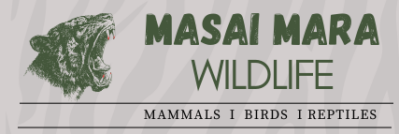- Common Names: Eland
- Scientific Name: Tragelaphus oryx
- Swahili Name: Pofu
- Maasai Name: Osiruwa
- Size:
- Head-Body Length: 4.35 meters (14 feet)
- Shoulder Height: 1.8 meters (6 feet)
- Gestation: 35–39 weeks
- IUCN Status: Least Concern, though populations are under pressure in some regions due to habitat loss and hunting.
Recognition and Appearance
The Eland is the largest of all antelope species, often mistaken for cattle because of its immense size. Males can weigh over 900 kg (2,000 lbs), with both males and females sporting long, spiraled horns. Older males are darker in color, with a bluish-grey coat, a distinctive dewlap (a large flap of skin hanging from the neck), and a tuft of coarse hair on their foreheads. These bulls are visually more robust and imposing than younger males, while females are generally lighter in color and smaller in size.
A fascinating feature of the Eland is the loud clicking sound produced by their knee joints as they walk, which can be heard from some distance. It is believed to function as a form of communication within the herd, especially in non-territorial groups where social bonds are important.
Habits and Behavior
Elands are typically shy and will trot away from approaching vehicles, but their sheer size means they rely more on steady speed than on dashing from danger. Remarkably, despite their bulk, adult Eland are capable of jumping over fences up to 3 meters (10 feet) high, showcasing their impressive strength and agility.
Elands are gregarious and tend to form large family herds consisting of females and juveniles. Herds can number over 100 individuals. Males, particularly older bulls, are more solitary or may form smaller bachelor groups led by a dominant male. These groups are fluid, with males joining and leaving based on food availability and mating opportunities.
Feeding and Diet
As mixed feeders, Elands browse and graze depending on what is available in their environment. Their diet consists primarily of herbs, foliage, and shrubs, although they are capable of feeding on grass when necessary. They are highly adaptable, making them successful in a variety of habitats from open grasslands to thickly wooded savanna and acacia scrub.
Eland are known for their remarkable ability to thrive in semi-arid environments, owing to their capability of subsisting on tough, dry vegetation. They are also efficient at extracting moisture from their food, allowing them to survive without direct water sources for extended periods.
Habitat and Distribution
Eland are widely distributed across East and Southern Africa, preferring a range of habitats from open grasslands to acacia woodlands and thickets. In the Masai Mara, they are commonly spotted in open savanna areas, particularly where there is access to dense cover for refuge. They often remain hidden in bushy thickets during the hottest parts of the day, venturing out to feed in the cooler morning and evening hours.
Social Structure and Reproduction
Eland social structures are fluid, with no strict territories. Maternal herds, consisting of females and their offspring, are commonly visited by males seeking out females in oestrus. Mating behavior includes males testing female urine for fertility before engaging in courtship. Once mating occurs, the female carries her calf for a gestation period of approximately nine months.
Eland calves, unlike many other antelope species, do not hide for extended periods after birth. Within a day of being born, they join the maternal herd and begin mingling with other calves in a “crèche,” ensuring that they are quickly integrated into the protective group dynamics of the herd.
Conservation Status
Eland are classified as Least Concern on the IUCN Red List. However, they face localized threats from habitat loss due to agricultural expansion, hunting for meat and trophies, and human-wildlife conflict. In protected areas like the Masai Mara, their populations remain stable. Conservation efforts focusing on habitat preservation and sustainable land use are critical to ensuring the continued survival of this majestic species across its range.
Interesting Facts
- Eland are capable of long migrations in search of food and water, often moving great distances across their range in response to seasonal changes.
- Their horns, which can grow up to 1 meter (3 feet) in length, are used for defense against predators and during battles between males for dominance.
- Eland herds are known for their exceptional coordination and communication, with males using the clicking of their knees as a social signal.
The Eland, with its grandeur and grace, is one of the most iconic antelope species in Africa, showcasing resilience and adaptability across diverse ecosystems. Encountering these impressive animals in the Masai Mara is a true highlight for any safari enthusiast.
